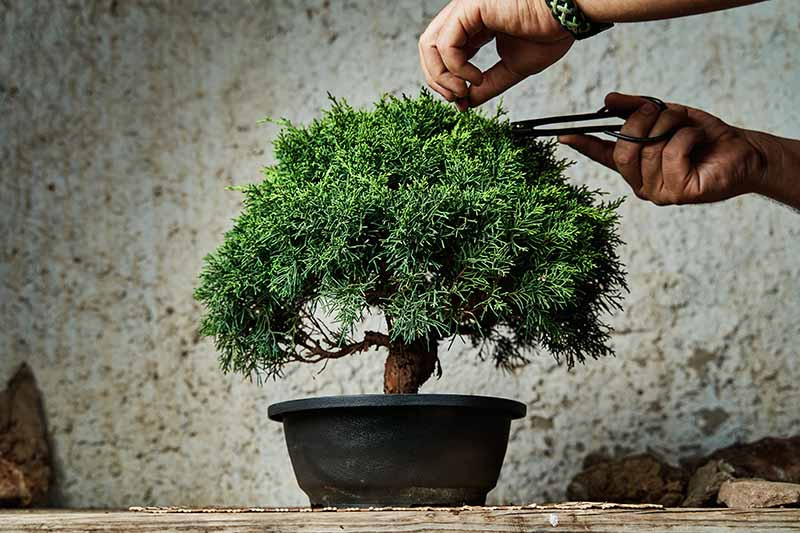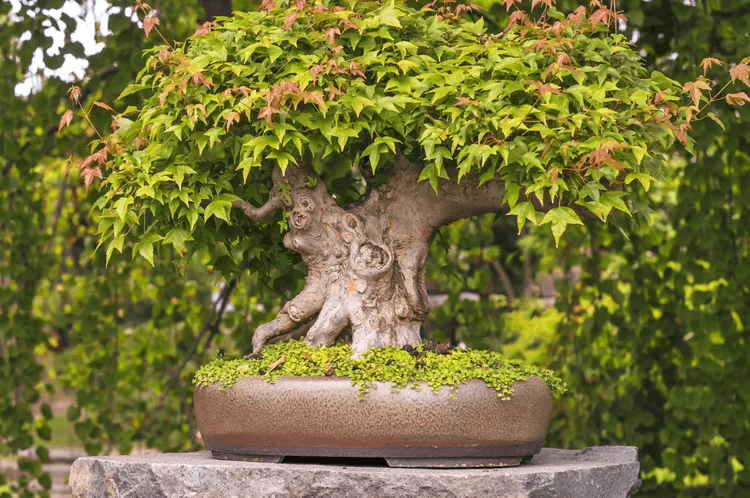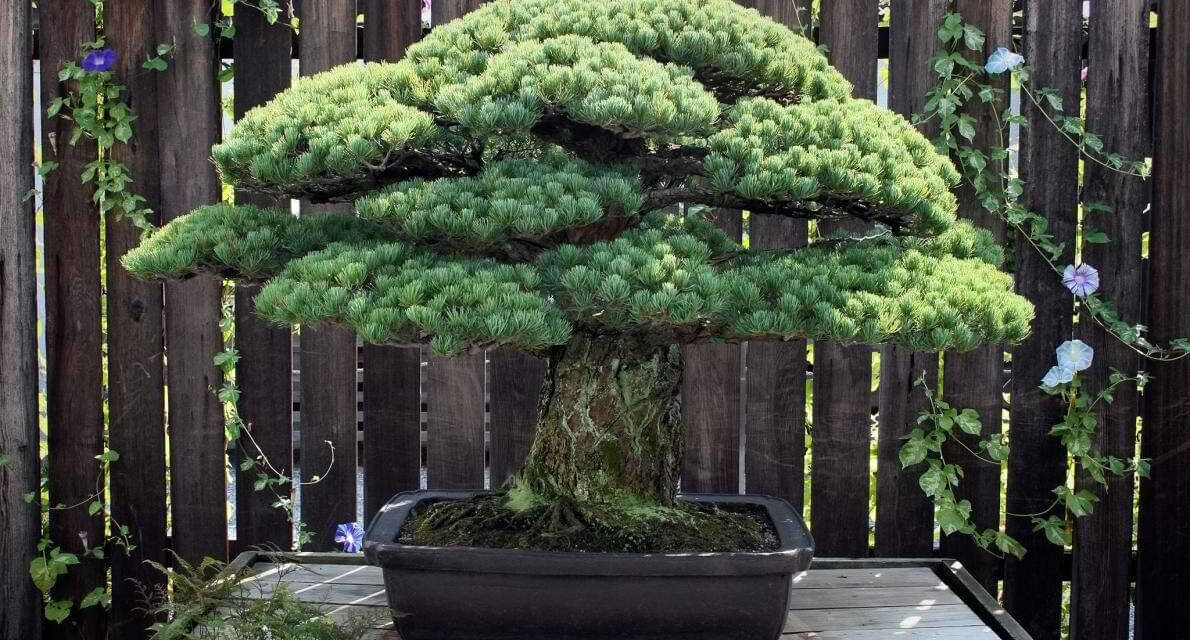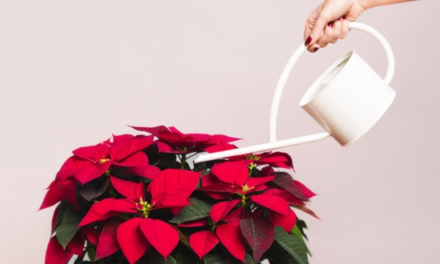Bonsai, the ancient art of cultivating miniature trees, is more than just gardening; it's a pursuit that combines horticultural techniques with aesthetic principles, offering a meditative and rewarding experience. Originating in Asia over a thousand years ago, bonsai involves carefully pruning and shaping trees to create miniature yet realistic representations of nature. If you're intrigued by the idea of starting your own bonsai but don't know where to begin, this guide is for you.

Understanding Bonsai
Bonsai is not a specific type of tree; rather, it's a way of growing certain tree species to keep them small, mimicking the shape and style of mature, full-size trees. The goal is to create a harmonious composition that reflects the beauty and balance of the natural world.
Choosing Your Bonsai Tree
The first step in creating a bonsai is selecting the right tree. Popular choices for beginners include the Ficus (particularly for those living in warmer climates), the Juniper, or the Chinese Elm. These species are hardy, adaptable to the bonsai process, and relatively easy to care for.
When choosing your tree, consider the following:
- Climate Compatibility: Make sure the tree you choose is suitable for the climate where you live, especially if you plan to keep it outdoors.
- Tree Health: Look for a tree with a sturdy trunk, healthy foliage, and no signs of pests or diseases.
Essential Bonsai Tools
To start, you'll need a few basic tools:
- Pruning Shears: For trimming leaves and small branches.
- Concave Cutters: For removing larger branches, leaving a concave cut that heals with minimal scarring.
- Wire Cutters: For cutting the wires used in shaping branches.
- Bonsai Wire: For training branches to grow in the desired direction.
- A Bonsai Pot: Typically shallow to restrict root growth and encourage miniaturization.
The Basics of Bonsai Care

Watering
Bonsai trees need careful watering. Check the soil moisture daily, and water your tree when the top layer of soil feels slightly dry. Avoid over-watering, as this can lead to root rot.
Sunlight
Most bonsai trees require several hours of direct sunlight daily. However, during hot summer months, protect your tree from intense afternoon sun to prevent leaf scorch.
Pruning
Pruning is essential for maintaining the miniature size of your bonsai and for shaping its appearance. Regular pruning of both the foliage and roots is necessary:
- Foliage pruning is performed to shape the tree and manage its growth.
- Root pruning is done when repotting to encourage a compact root system.
Wiring
Wiring branches allows you to shape them as they grow. Use bonsai wire to gently bend and position branches, but be careful not to damage the bark. Monitor wired branches regularly, as they can grow quickly and cut into the wire.
Styling Your Bonsai
Bonsai styling is an art form, and there are several traditional styles, including:
- Formal Upright (Chokkan): A straight trunk with branches that progressively decrease in size from bottom to top.
- Informal Upright (Moyogi): A trunk with slight curves, giving the tree a more natural appearance.
- Slanting (Shakan): A trunk that leans to one side, with branches growing predominantly on the opposite side.
- Cascade (Kengai): A dramatic style where the tree grows downward, below the level of the pot, mimicking trees that grow over cliffs.
As a beginner, start with a simple style and gradually experiment as you gain confidence and experience.
Repotting
Bonsai trees need to be repotted periodically to ensure they have enough space to grow and access to fresh soil. Young, fast-growing trees may need repotting every two years, while older trees can be repotted less frequently.
Timing and Signs for Repotting
The best time to repot most bonsai trees is in early spring, just before the tree begins its growth spurt. This timing allows the tree to recover quickly and take advantage of the growing season to reestablish its roots. However, the specific timing can vary based on the species of the tree and the climate in your area.
You’ll know it’s time to repot your bonsai if you notice any of the following signs:
- Roots circling the inside edge of the pot or growing out of the drainage holes.
- Water drains slowly through the soil, indicating compacted soil.
- The tree's growth has slowed significantly, which might suggest it's root-bound.
Step-by-Step Guide to Repotting
1. Prepare Your Materials: Before you begin, make sure you have all the necessary materials on hand. You'll need fresh bonsai soil, a new pot (if you’re changing sizes or styles), a root rake, and sharp scissors or shears.
2. Remove the Tree: Carefully remove the tree from its current pot. Use a root rake to gently loosen the soil around the edges of the pot, making it easier to free the tree.
3. Trim the Roots: Once the tree is out, use sharp scissors to trim away any dead or overly long roots. Aim to remove no more than one-third of the root mass. This process encourages the growth of new feeder roots, which are vital for absorbing nutrients and water.
4. Prepare the New Pot: If you’re using a new pot, cover the drainage holes with mesh to prevent soil from washing out. Add a layer of fresh bonsai soil at the bottom of the pot. This soil should be specifically formulated for bonsai, as it ensures proper drainage and aeration.
5. Repotting the Tree: Place your bonsai in the new pot and carefully spread the roots out over the fresh layer of soil. Then, fill in around the roots with more bonsai soil, using a chopstick or similar tool to work the soil in around the roots and eliminate any air pockets.
6. Water Thoroughly: After repotting, water your bonsai thoroughly to help settle the soil around the roots and to encourage them to begin growing into their new environment. It's crucial to ensure the soil is moist but not waterlogged.
7. Aftercare: Keep your repotted bonsai in a shaded area away from direct sunlight for a few weeks to allow it to recover from the stress of repotting. Avoid fertilizing for at least a month, as the fresh soil typically contains sufficient nutrients for the initial period after repotting.
Choosing the Right Soil and Pot
Selecting the appropriate soil and pot is vital for your bonsai's health and aesthetics. Bonsai soil should offer a balance of water retention, aeration, and drainage. There are several commercial bonsai soil mixes available, or you can create your own mix using ingredients like akadama, pumice, and lava rock.
The pot you choose not only houses your bonsai but also complements its design. Consider the tree's style and color when selecting a pot, aiming for harmony and balance. Traditional bonsai pots are shallow, which helps restrict root growth and promote the miniature size of the tree. Repotting your bonsai might seem daunting at first, but with patience and practice, it becomes a rewarding part of the bonsai cultivation experience. It's an opportunity to refresh your tree's environment, encourage healthy growth, and deepen your connection with this fascinating art form.
The Bonsai Journey
Cultivating bonsai is a lifelong learning experience. Each tree is unique, and as it grows and changes, so will your understanding and technique. Joining a local bonsai club or participating in online forums can provide valuable support and inspiration. Remember, the goal of bonsai is not just to create a beautiful plant but to embark on a journey of patience, creativity, and mindfulness. As you care for your bonsai, you'll find it's not just the tree that grows and transforms but you as well.



















